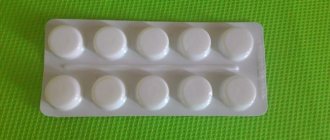What is hypertonic saline solution?
To put it more simply, a hypertonic solution is a mixture of water and salt (sodium chloride) in the correct proportion. To understand the action of such a remedy, you should know the basics of biology.
The human body, like any other living organism, consists of cells. Inside each of them there is a liquid that has its own pressure coefficient. This pressure is influenced by the sodium chloride content in the liquid, which is 0.9% both in cells and in human plasma.
Cells exchange useful substances by reducing or increasing the salt content; if the coefficients of neighboring cells are equal, then there will be no exchange. The flow occurs from a higher percentage of sodium chloride content to a lower one.
There are three types of solutions:
- Less than 0.9% hypotonic.
- Equal to 0.9% physiological or isotonic
- More than 0.9% hypertensive.
Hypertonic solution for nasal rinsing and rinsing
In the off-season and winter period, when viral diseases reach their apogee, hypertonic solution is used not only for treatment, but also as a prophylaxis against influenza, acute respiratory viral infections and acute respiratory infections. At the first hint of a sore throat or rhinitis, the nasal passages and tonsils are washed with a lukewarm saline solution. This prevents the development of the disease and speeds up recovery at any stage of the disease.
Rinsing the nose is carried out using a small teapot, a syringe without a needle, or simply from the palm of your hand, drawing in the solution first through one and then the other nostril. This disinfects the nasal passages, relieves swelling, facilitates the passage of mucus and prevents it from stagnating.
The hypertonic nasal solution should have a weak concentration - only 2%. Otherwise, treatment is fraught with a burn to the mucous membrane. Gargle with the same composition 3-5 times a day.
The healing properties of saline solution
The operating mechanism of a hypertonic solution is to remove fluid from the body at the sites of application. The lymphatic system does similar work in the body; if there is any problem with this function, a saline solution is used.
The substance works like this:
- Apply to the surface.
- The substance removes fluid from cells in the damaged area.
- The body strives to replace the loss, which entails the renewal of intracellular fluid and promotes healing.
Self-cooking
For use in washing the mucous membranes of the nasal passages, mouth, throat, stimulating the passage of stool and cleansing purulent wounds, you can prepare a hypertonic solution at home. You cannot make a sterile drug for intravenous administration yourself, nor can you administer this drug at home without a doctor’s prescription.
The pharmaceutical form of the drug is available in bottles of 200 and 400 ml; only distilled water is used for dilution and the dry substance is calculated per 1 liter. For topical use, ordinary boiled water, cooled to a temperature of 35–37 degrees (this temperature to accelerate dissolution) and ordinary table salt from the kitchen are suitable.
How to prepare a hypertonic solution in terms of 200 ml of water (the volume of a faceted glass up to the rim):
| Percentage of solution | Amount of salt |
| 1 | 2 grams or ¼ tsp. |
| 2 | 4 grams or ½ tsp. |
| 5 | 10 grams or 1 tsp. with a "slide" |
| 10 | 20 grams or 2 tsp. with a "slide" |
Storing a homemade solution does not require special conditions - antimicrobial activity prevents the growth of bacteria. The shelf life is limited by salt crystallization (easy to determine by eye).
In conclusion, it can be noted that saline solution in the treatment of purulent-inflammatory processes in some cases successfully replaces expensive topical medications.
Purposes of using saline solution
Despite the simplicity of preparing the saline solution, its use should be discussed with a specialist and the instructions for use should be taken into account. In medicine, the remedy is used in combination with other drugs to speed up recovery and enhance the effect. Hypertonic solution is used in the following cases, such as:
- Sinusitis.
- A dandy.
- Headache.
- Sinusitis.
- Bruises and abrasions.
- Purulent wounds.
- Chronic appendicitis.
- Acute respiratory diseases.
- Bronchial asthma.
- Migraine.
- Burns.
- Insect bites.
- Angina.
- Osteochondrosis.
- Edema of various etiologies.
- Gynecological diseases.
- Hematomas of various nature.
Video
Treatment of purulent wounds with salt
Salt solution has been known for its healing properties since ancient times, and the main area of treatment lies precisely in accelerating the healing of various wounds, primarily purulent ones.
During many wars, doctors used saline solutions to clean wounds and applied salt dressings to particularly difficult lacerations that became infected and suppurated . With this treatment, the wounds were cleared of purulent formations literally in 3 days, while the processes of inflammation of the damaged tissues disappeared, and the patients lost their state of fever.
During the years of the most terrible battles, military doctors saved thousands of lives with the help of ordinary salt, preventing the development of gangrene and other complications.
Salt has an absorbent effect. When a dressing with salt is applied to a wound, the infected liquid begins to be absorbed from it, along with which various viruses, microbes, bacteria and other pathogenic microorganisms that cause inflammation and suppuration in damaged tissues are eliminated.
An important point of this treatment is that salt does not affect blood cells and tissues. Today, saline solution is also quite often used in the treatment of lacerations and purulent wounds.
Features of application
There are a number of recommendations for the use of saline solution that will improve the effectiveness of treatment, as well as the final result of using the saline solution.
These tips are:
- Use only fresh solution.
- Use breathable materials, such as gauze, as a means of application.
- The temperature of the solution should be warm.
- Correctly place the compress on the body, for example, in case of lung disease, apply the cloth with the solution to the back.
- Clean application means after use.
Cooking instructions
Before you start making your own medicine, you should pay attention to standard pharmacy forms of saline solution.
It is also necessary to analyze the cases in which home and pharmacy solutions should be used.
| % sodium chloride content | Applications and recommendations |
| 1-2% | Diseases of the nasopharynx (sinusitis, sinusitis, sinusitis, rhinitis). Rinse your mouth or nose every 4 hours for 5 days. |
| 2-5% | Gastric lavage, for example, if lapis (silver nitrate) is ingested. Average volume 500 ml. |
| 5-10% | Tissue suppuration, bruises or abrasions. Apply a compress 2-3 times a day. |
| 0.1 | Bleeding, both internal and external, oligo- or anuria. Intravenous administration 10-20 ml. |
The recipe is simple, you will need 1 liter of ordinary boiled water, you can use purified, distilled or tap water. Add 90 g of sodium chloride to the liquid, stir until the salt crystals completely disappear. The concentrate in this case will contain 0.9%. The ratio for the increase is 100 g of water per 1 g of salt.
For each disease, the appropriate concentration of solution should be used.
How to prepare a hypertonic solution at home: nuances
The water for the solution should be boiled (for an enema it should be lukewarm).
If the recipe says to use rain or snow melt water for the solution, then we’ll leave it to the conscience of the recipe’s compilers.
Because such water can contain any microorganisms, including dysentery and bovine tapeworm eggs.
If the concentration of sodium chloride exceeds 10%, capillaries at the site of the dressing may burst or skin pain may appear.
The solution cannot be stored; it should be used immediately, otherwise it will lose its healing properties. Stir the salt until it is completely dissolved!
How to prepare a hypertonic solution: pour the required amount of water into a saucepan, add salt and bring to a boil. Wait until it cools down and use.
For baths, rubbing, instillation, rinsing and lotions, a 1-2% solution is required; For enema rinses, a solution of 5% salt concentration will be required; For gastric lavage, a 2-5% saline solution is used; For dressings, saturation should not exceed 8%; For intravenous administration, the consistency is determined by the doctor.
Contraindications
For all medications, there are contraindications due to individual intolerance to the active substance by the patient. In addition, this remedy should not be used in the absence of urination and large volumes of blood loss.
Under no circumstances should it be administered intramuscularly, as this may cause tissue necrosis at the injection site.
Be sure to adhere to the correct concentration and dosage. Otherwise, hypernatremia or hyperchloremia may occur.
Also restrictions for use are such diseases as:
- Sclerosis of cerebral vessels.
- Pulmonary hemorrhage.
- Problems with heart function.
Contraindications and negative effects
Hypertonic solution is a universal medical remedy with a minimum number of contraindications:
Contraindication for local use (rinsing, rinsing, dressings, microenemas) is individual intolerance (allergic reactions of any type).
Contraindications for intravenous administration:
- individual intolerance;
- in the absence of urine output - only according to strict laboratory indications (decreased chlorine and sodium ions in the blood plasma and increased potassium content);
- for large blood losses, they are currently rarely used - only if there is a shortage of drugs to restore the volume of circulating plasma (due to the need to administer large volumes of solution to adequately support heart function and blood circulation, which in turn leads to electrolyte disturbances, aggravating the patient’s condition ).
A burning sensation, or even slight pain in the area of the wound surface when applying a napkin with a solution is a normal reaction and does not require its cancellation. The discomfort goes away with regular use.
Administration of the drug subcutaneously and intramuscularly is absolutely contraindicated - tissue necrosis develops at the injection site.
Administration of a large volume of solution through the stomach or intravenously will lead to the development of hypernatrium and hyperchloremia (exceeding the physiological concentration of ions in the blood). Clinical manifestations include: thirst, impaired consciousness, convulsions. In extreme cases, coma and cerebral bleeding develop.
Dressings with hypertonic solution, how to use correctly?
For treatment procedures to be effective, you should follow the instructions and recommendations for applying bandages with hypertonic sodium chloride solution.
- Before applying the bandage, wash the area to be applied and wait until it dries completely.
- The fabric from which the bandage is made must be soft and well- ventilated from natural materials, as well as sterile.
- The dressing should be well soaked in the solution , the temperature of which should be about 40 degrees or slightly higher.
- The best fixation is a medical bandage ; it is not recommended to use materials that do not allow air to pass through.
- The bandage should remain in place for 15 hours. The course of treatment in different cases ranges from 1 to 3 weeks.
As you can understand from the information received, the range of uses of sodium chloride is quite wide. This medicine falls into the ranks of leaders in use in the medical field due to its effectiveness, production price, ease of manufacture, use and versatility.
Options for use and rules for using the solution
Lotions with saline solution are applied according to the principle:
- A hypertonic or isotonic solution is used. Helps quickly separate pathological contents from the body.
- Apply to cotton pads, regular sterile cotton wool.
- For convenience, the lotion is secured with a plaster on the wounds.
Basic rules for applying a compress
Cotton and linen of natural dyeing without a pattern are considered suitable materials. They allow air to pass through well and absorb liquid. The best option would be to use several layers of sterile gauze.
The saline dressing should not be covered with cellophane or a bag. The impregnated fabric allows air to pass through and ensures normal reparative processes. Before applying a bandage, the wound surface must be additionally treated with laundry soap and antiseptic preparations.
After application, be sure to dry with dry wipes. Wring out the bandages soaked in the solution well to prevent leaks. They should be of medium humidity. Material that is too wet causes significant inconvenience; dry material will not work as intended.
Then apply to the wound surface. The material must be equal in length and width. Afterwards you need to secure the bandage with a sterile bandage or adhesive tape. It is not allowed to insulate the compress with woolen items. The bandage is removed after 12 hours. The course of treatment depends on the degree of damage, depth of the wound, and the presence of complications.
Rinse with saline solution for gum inflammation, severe toothache:
- Before the procedure, get rid of any leftover food and brush your teeth.
- Rinse your mouth for 5 minutes. Change every half minute.
- It is advisable to tilt the saline liquid towards the painful side and act on the source of inflammation.
- Carry out the procedure for wounds every hour.
- Then wait 5 minutes and rinse your mouth.
Do not use hot or too cold water for wound treatment solution. It causes additional trauma to the mucous membrane and noticeable discomfort. A decrease in unpleasant symptoms when rinsing with cold water indicates inflammation of the nerve fiber of the tooth.
The white powder kills pathogenic bacteria in the mouth. Draws out pathological fluid from inflamed areas. The solution has a healing effect on all dental cracks and holes. It removes food debris that causes inflammation.
It is quite simple to prepare a folk recipe for wound healing. You need to take 2 teaspoons of salt, 200 ml of boiled water. To stir thoroughly.
An alternative option is to use baking soda. For quick results, take both ingredients. Mix in equal quantities.
Rinsing with salt and its solution is carried out for nasal congestion. They are recommended from 2 years of age. The product acts gently on wounds and does not cause vasoconstriction. It relieves swelling of the mucous membrane and improves nasal breathing. The nose is washed with a pipette. You cannot use a syringe due to strong pressure on the inflamed mucosa. Not contraindicated for viral rhinitis with high body temperature. Helps with purulent discharge.
Salt baths strengthen nails on the feet and hands. They cleanse the skin of pathological microorganisms and small wounds. The procedure is carried out with a solution of sea salt. You need to take 3-5 spoons per bowl of warm water. It is necessary to take medicinal baths for up to 10 minutes. The effect is noticeable after several procedures.











